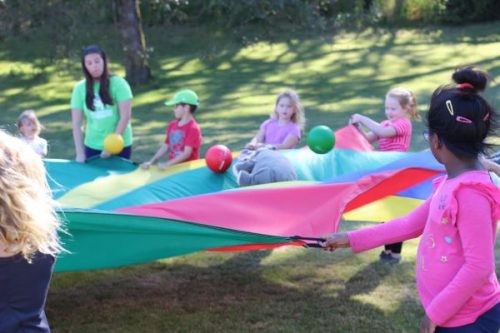Canadian government backs Physical Literacy for Communities project with $3.79 million investment
 Canadian children aren’t getting the daily physical exercise they need, a trend exacerbated by the ongoing pandemic.
Canadian children aren’t getting the daily physical exercise they need, a trend exacerbated by the ongoing pandemic.
Only 15% of five to 17-year-olds were meeting Canada’s 24-hour movement guidelines prior to COVID-19, and research shows that even fewer children and youth are meeting them now. In Canada, some children are at an even higher risk of physical inactivity, including Indigenous, racialized, and immigrant children as well as those with disabilities.
That’s why the Canadian government announced this month an investment of $3.79 million into Sport for Life’s Physical Literacy for Communities (PL4C) project, which will reach up to 150,000 children and youth aged two to 18 in British Columbia, Alberta, Ontario, Quebec, Nunavut, and Atlantic Canada. In addition to the federal funding, the investment will be further augmented by another $2 million dollars from foundations, sponsors, partners and communities. This three-year project will support schools and communities in addressing specific local barriers to healthy active living, as well as build community capacity through training in developing physical literacy.
“It’s so important that children and youth have the opportunity to develop physical literacy and take part in quality physical activity,” said Sport for Life CEO Richard Way. “The Physical Literacy for Communities project is a catalyst for communities to bring together the health, education, recreation and sport sectors to collectively improve the long-term health of Canadian kids.”
This funding will help bolster the hard work already being done to improve the physical activity rate of children and youth across the country. Executive Director Mandi Graham of Engage Sport North believes it has the potential to change the system permanently.
“A contribution of this magnitude in Northern BC will be instrumental in making a system change. Engage Sport North looks forward to working collaboratively with multiple partners and across sectors including health, sport, recreation, and education to ensure the Canadian Sport for Life framework is accessible to those living in Northern BC. This community-led model supports a fundamental shift away from dependencies to independence,” said Graham.
And it’s that collaborative approach that has participating communities most excited.
“The Physical Literacy for Communities project is meant to make a value-added contribution to existing efforts to support the health and well-being of children and youth in Atlantic Canada, “ said Physical Literacy for Communities Atlantic project manager Joe Doiron. “By using a collaborative, ‘ground up’ approach, we aim to support partners at the community level across sectors by sharing expertise and co-designing physical literacy opportunities for kids that reflect community needs.”
To read the Public Health Agency of Canada’s announcement, click here.
Production of this document has been made possible through a financial contribution from the Public Health Agency of Canada. The views expressed herein do not necessarily represent the views of the Public Health Agency of Canada.
